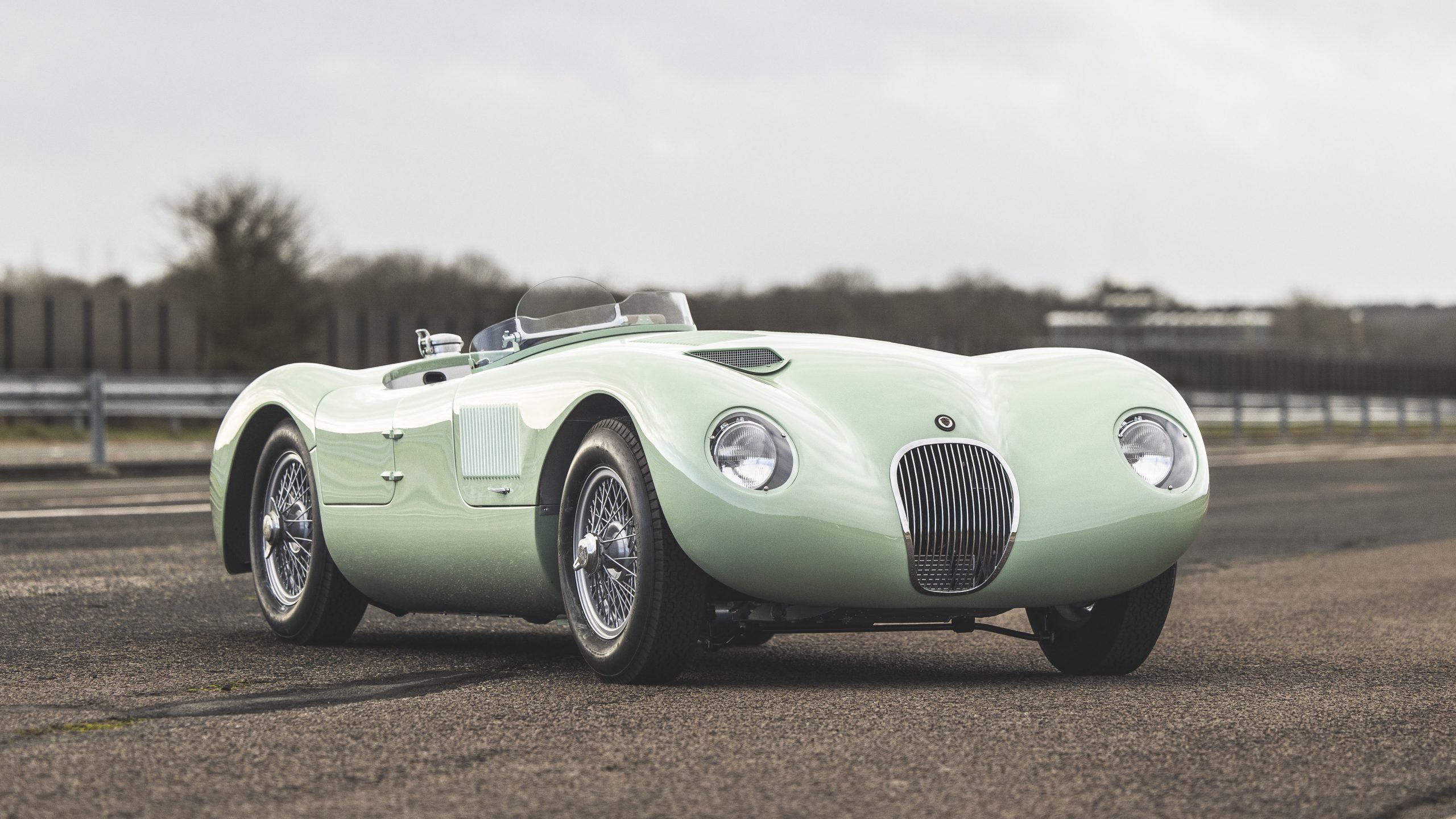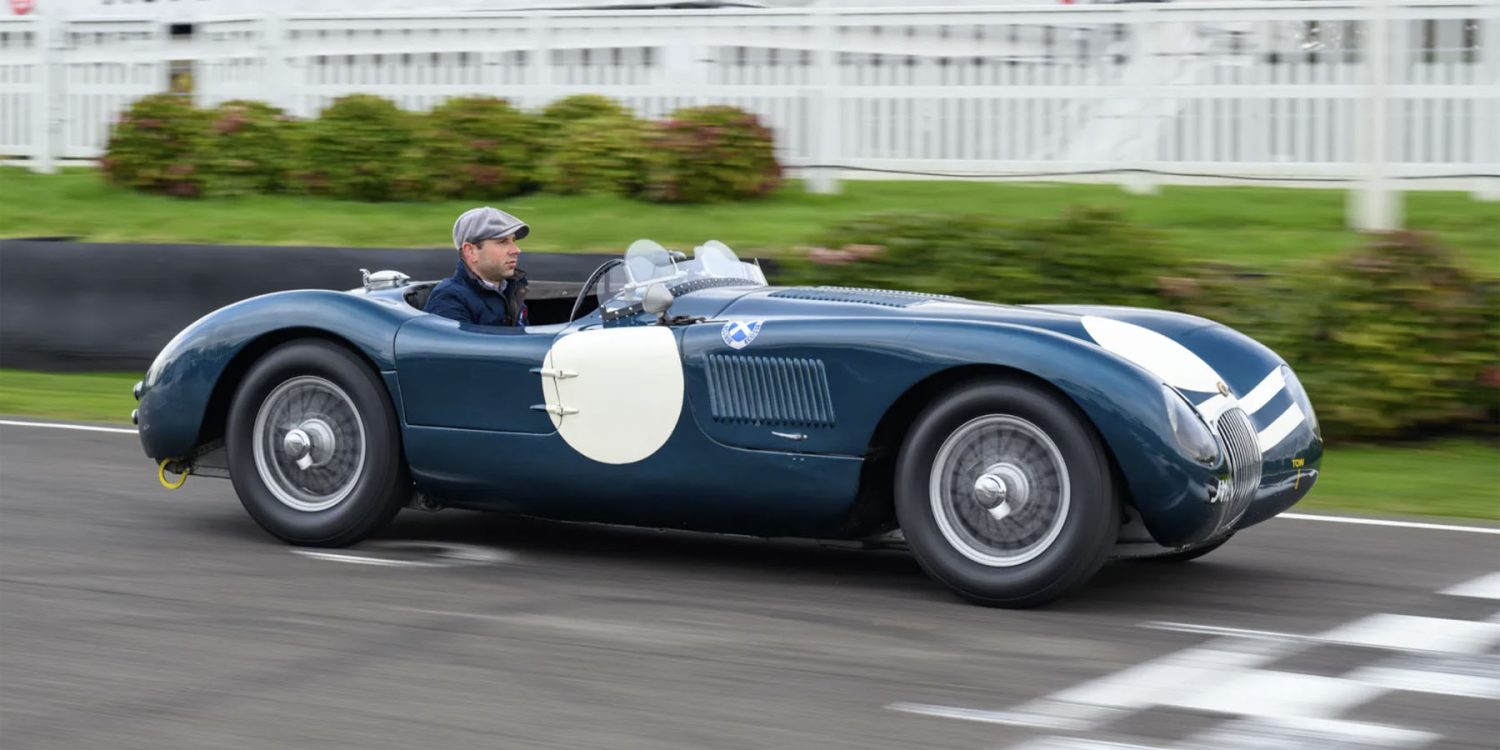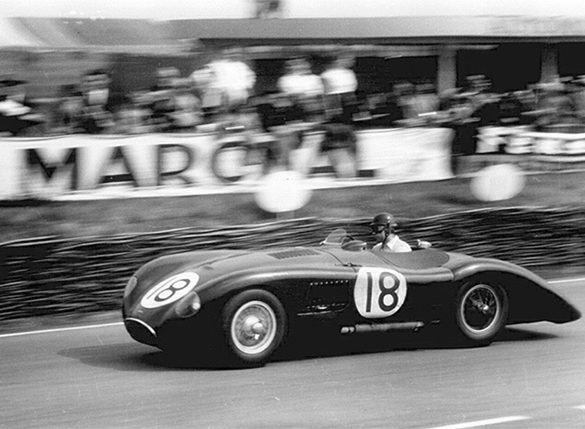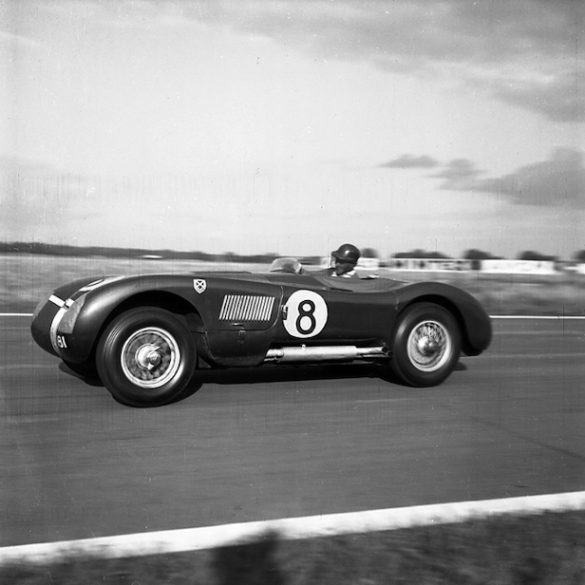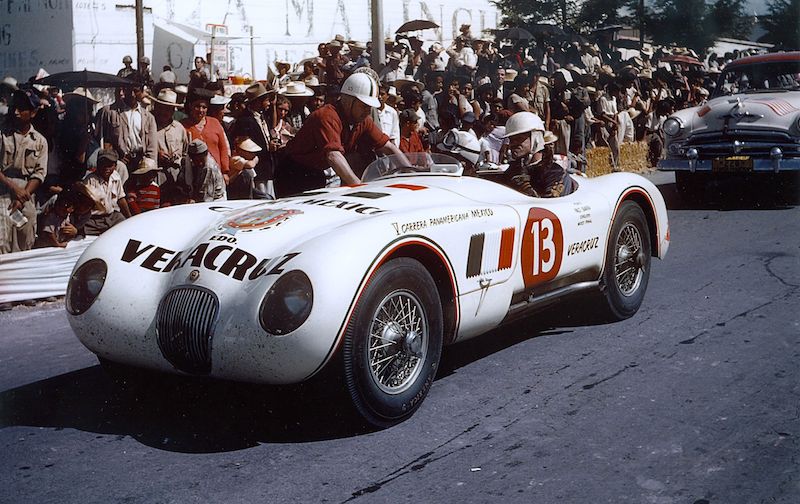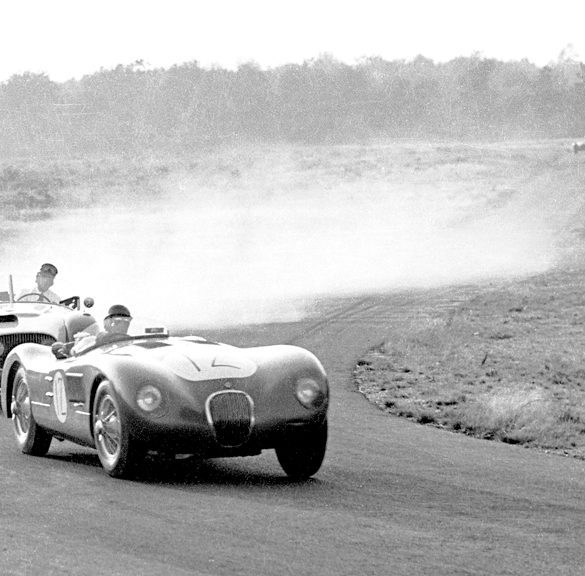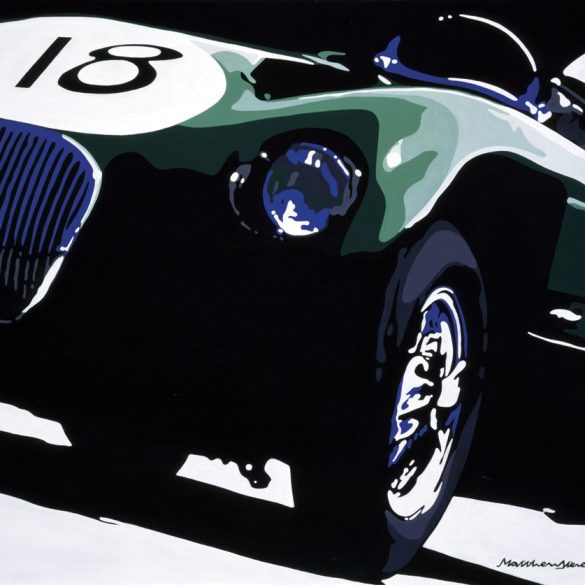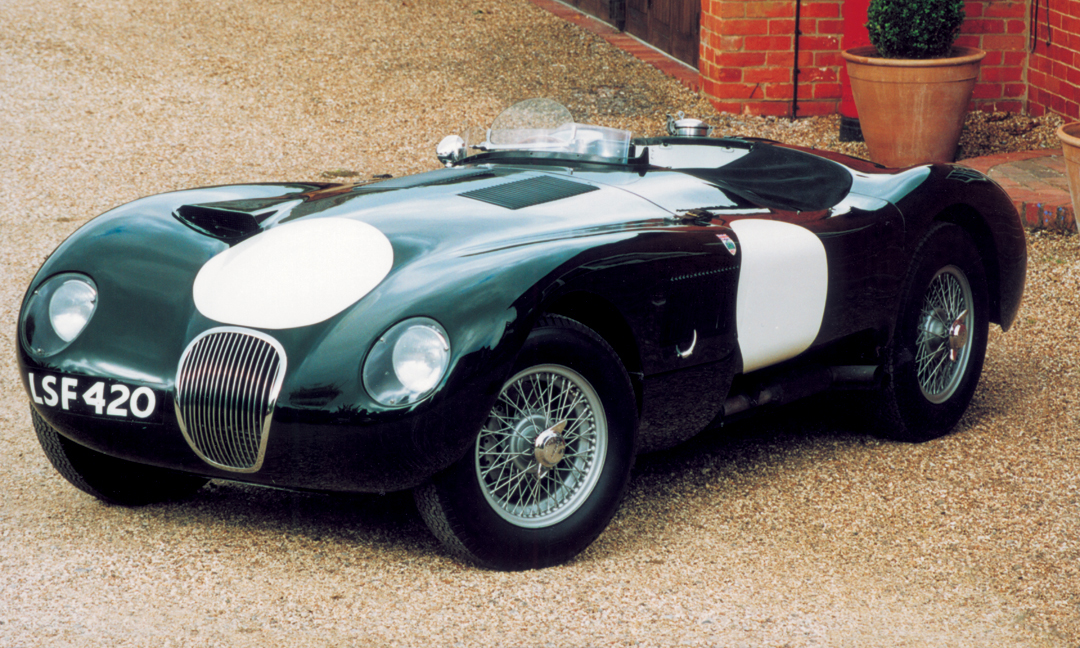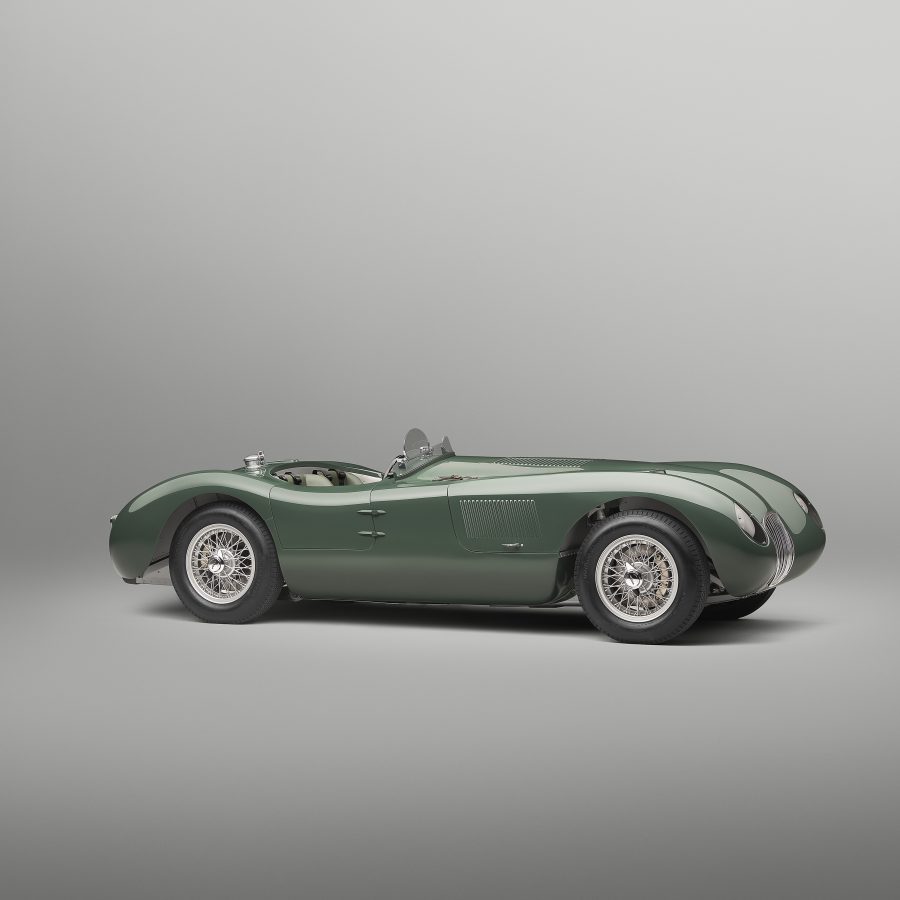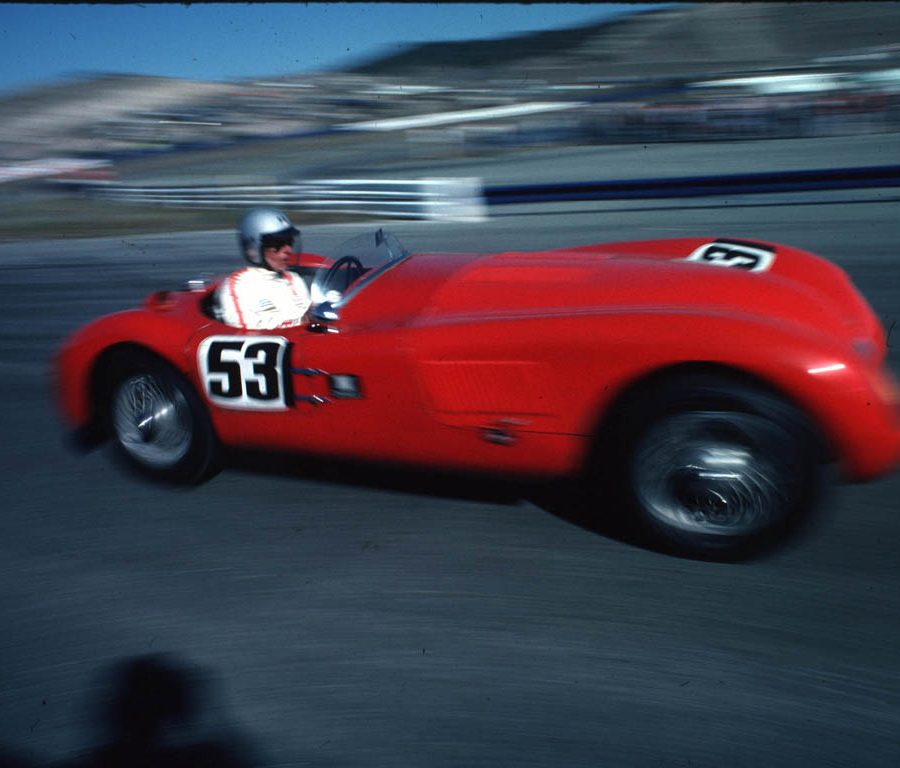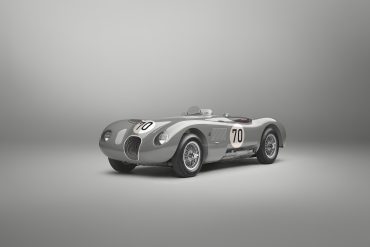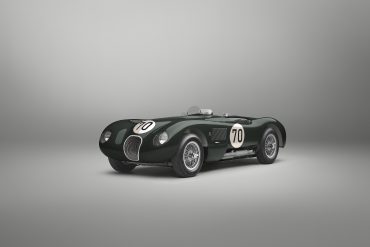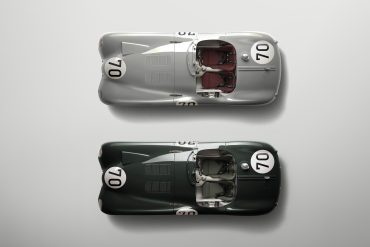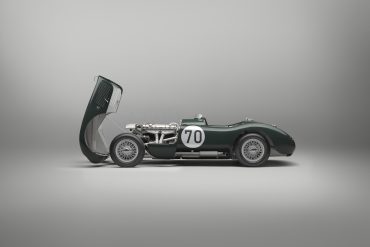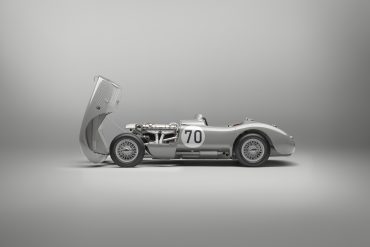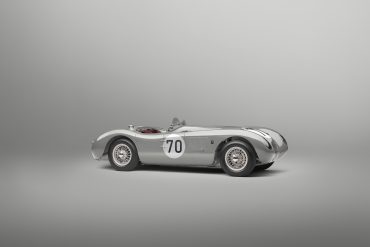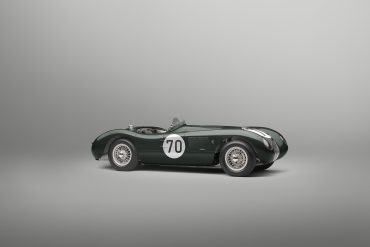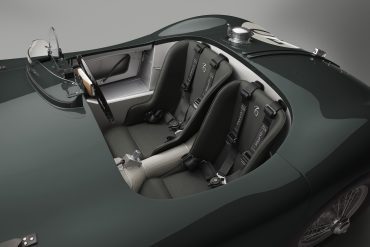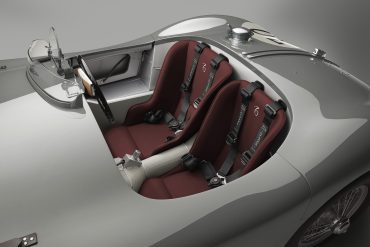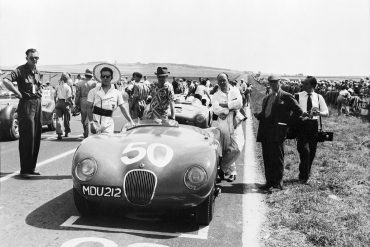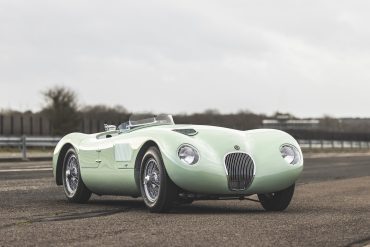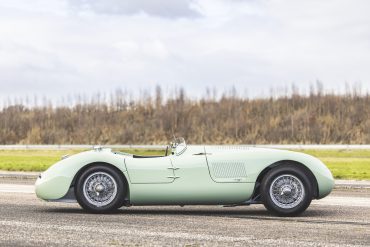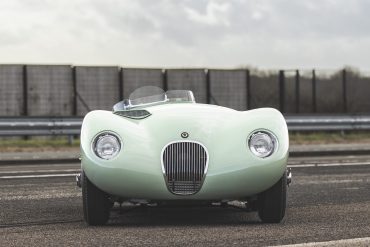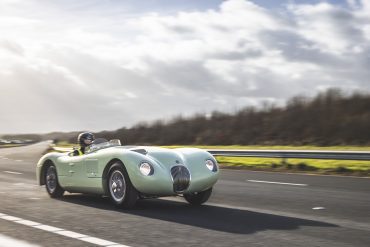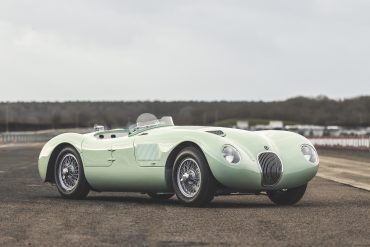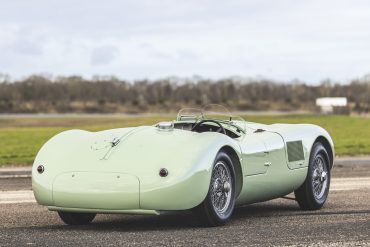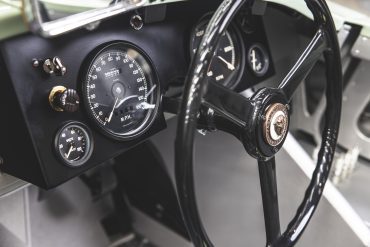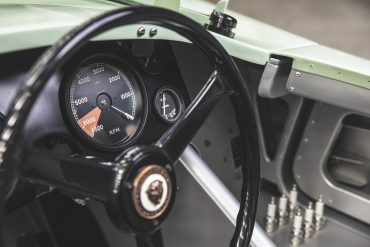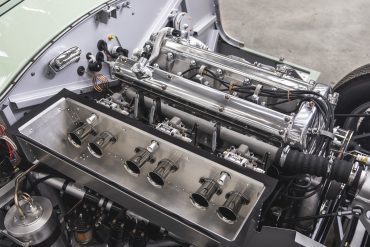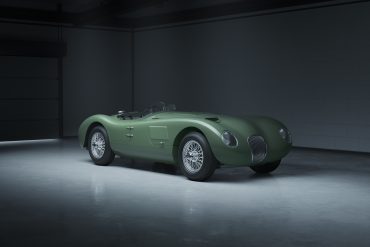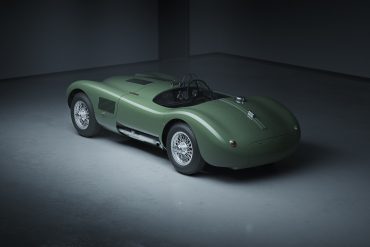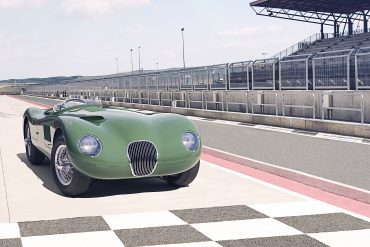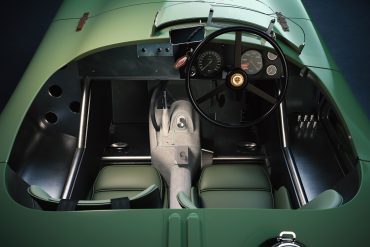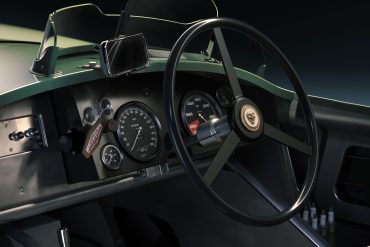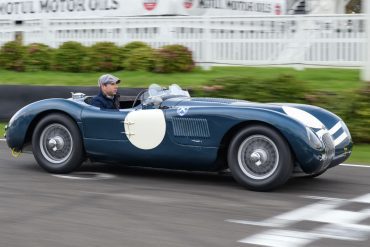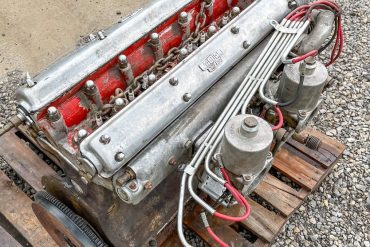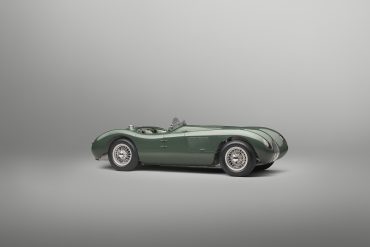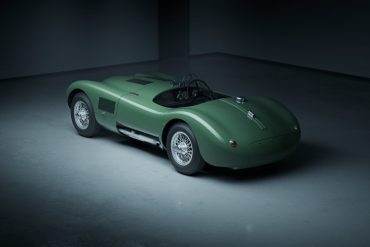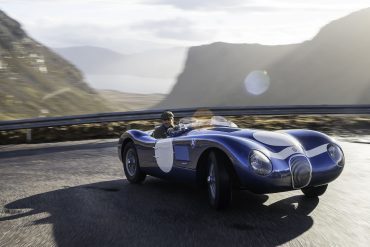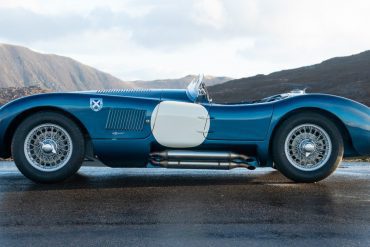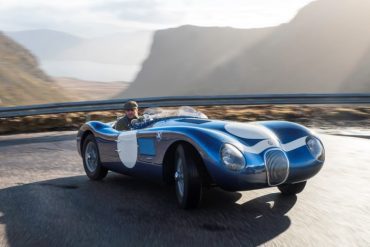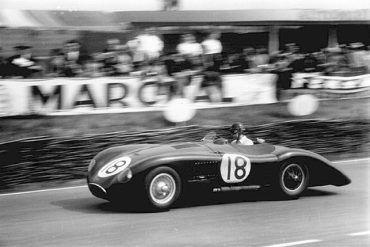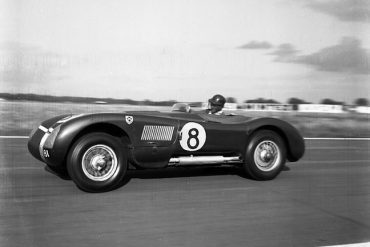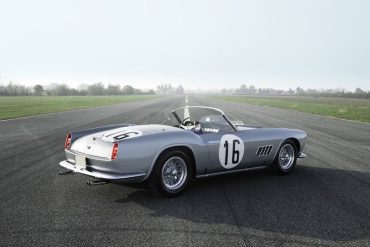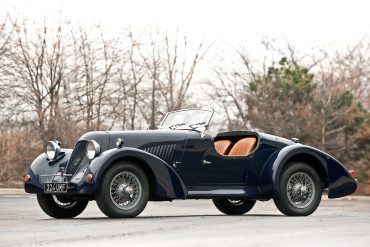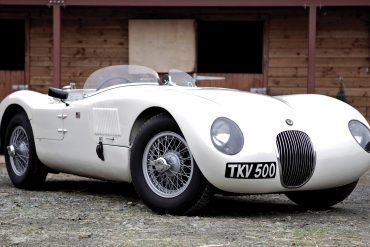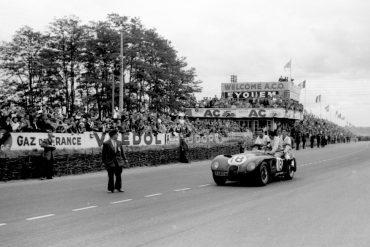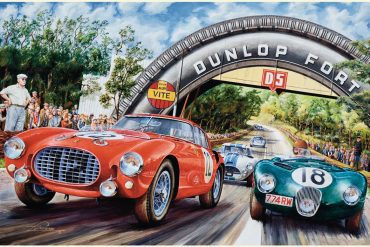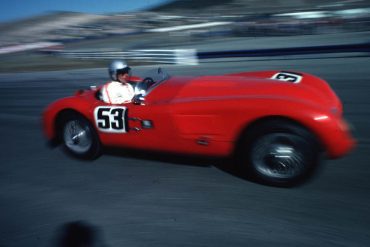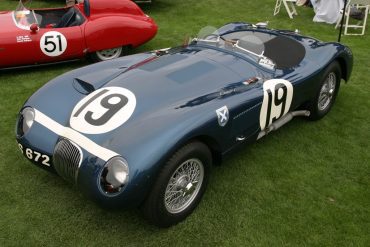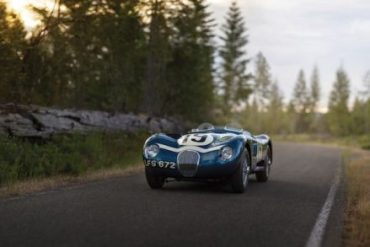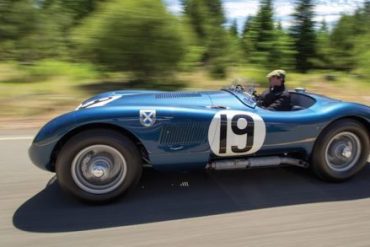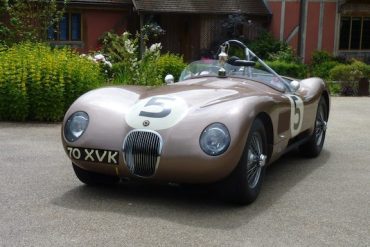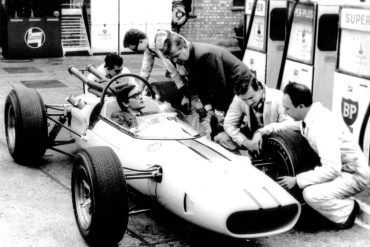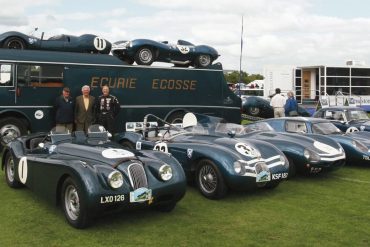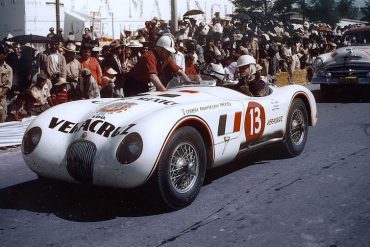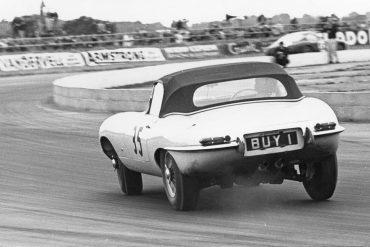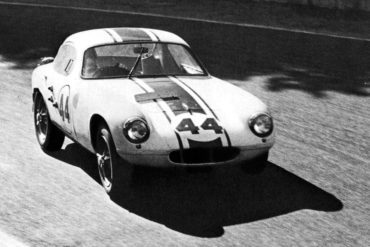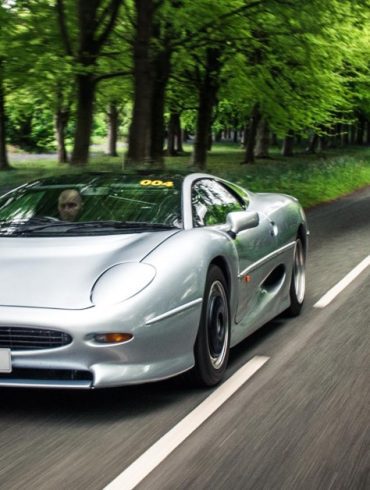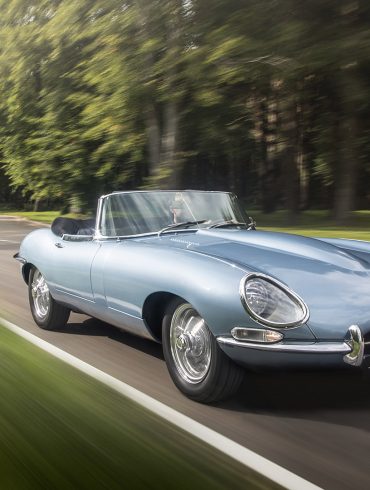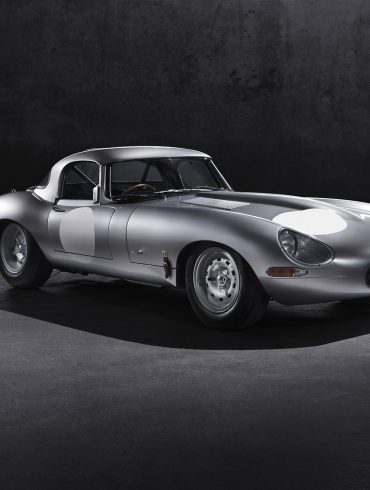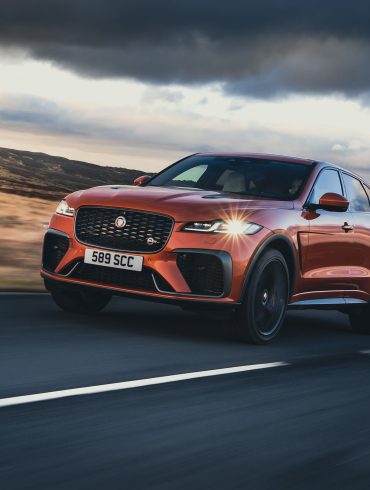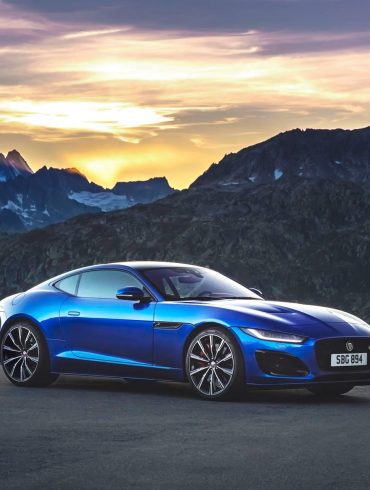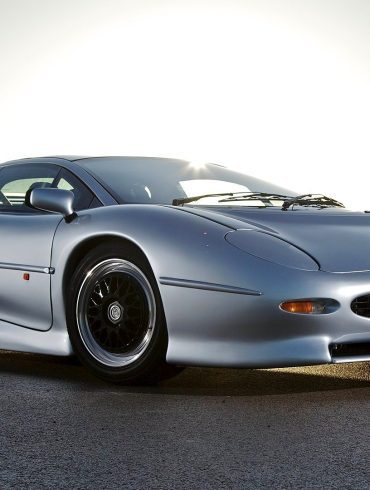Jaguar C-Type
1951 - 1953
The Jaguar C-Type (also called the Jaguar XK120-C) is a racing sports car built by Jaguar and sold from 1951 to 1953. In 1948, Jaguar launched the XK120. The car used the XK 120 running gear in a lightweight tubular frame designed by Jaguar Chief Engineer William Heynes, with a total of 53 C-Types built, 10 for Factory Racing and 43 of which were sold to Private Owners mainly in the US.
Overview / The Legend / Model Guides / The Full Story / Image Gallery / More Updates
Overview
The Jaguar C-Type (also called the Jaguar XK120-C) is a racing sports car built by Jaguar and sold from 1951 to 1953. In 1948, Jaguar launched the XK120. With a sophisticated dual-overhead cam 3.4-liter straight-six engine and curvy, aerodynamic bodywork, the car was a sales hit and lots of privateers ended up racing it. Jaguar decided to build a variant of the XK designed specifically with an eye toward competition.
First referred to internally as the XK120C, the car was ultimately different enough from the XK120 that its name changed to C-Type ('C' standing for Competition). The car used the XK 120 running gear in a lightweight tubular frame designed by Jaguar Chief Engineer William Heynes with an aerodynamic aluminium body jointly developed by William Heynes, R J (Bob) Knight and later Malcolm Sayer.
A total of 53 C-Types were built, 10 for Factory Racing and 43 of which were sold to Private Owners mainly in the US.
C-Type and XK120 Differences
While the XK120 was an impressive vehicle, noted for its capability to reach 120 mph, the objective for the C-Type was to optimize aerodynamics and minimize weight, thereby maximizing potential top speeds on elongated racetracks such as Le Mans.
Unlike the XK120, which utilized a hefty steel chassis borrowed from the Mark V sedan and employed an ash wood frame to support its aluminum bodywork, the C-Type introduced an innovative lightweight tubular frame chassis and was adorned with an aerodynamically efficient alloy body, crafted under the guidance of Malcolm Sayer.
The vehicle retained the 3.4-liter twin-cam straight-six engine from the XK120 but enhanced it with a refined cylinder head, more robust camshaft profiles, a dual exhaust system, and specialized pistons, elevating the power output from 160 hp to just above 200 hp.
Jaguar C-Type Basics
Also Called: Jaguar XK120-C
Manufacturer: Jaguar Cars
Production: 1951–1953
Class: Competition-Sports car
Body style: Roadster
Engine: 3,442 cm3 (210.04 cu in) XK6 Inline 6
Successor: Jaguar D-Type
Did You Know?
The C-Type was developed in a remarkably short time – about six months! This was a desperate push to be ready for the 1951 Le Mans race.
While not the first car ever to have disc brakes, the C-Type was the first to win a major race with them. This proved the superiority of the technology, paving the way for the widespread adoption of disc brakes in both racing and production cars.
"It was a very forgiving car, very easy to drive, and I never felt in danger in the car."
Stirling Moss
The Jaguar C-Type Story
Designed for the Racetrack
Jaguar achieved significant success in the renowned endurance competition with a car rapidly developed specifically for racing. The launch of the Jaguar XK120 in 1948 marked an instant triumph. Initially intended as a showcase for the XK engine and planned for limited production, the overwhelming demand from dealers, particularly in North America, led to its mass production in Foleshill. Initially fabricated with aluminum bodies due to post-war steel rationing, these vehicles quickly gained fame on racing and rally circuits. Impressively, three XK120s participated in the British Racing Drivers’ Club Production Car race at Silverstone, securing the top two positions. Motivated by this, Jaguar provided six XK120s to a select group of drivers for the 1950 Mille Miglia, with Leslie Johnson clinching fifth place.
The Le Mans 24 Hour Race, known for its intensity, saw Jaguar enter three XK120s in 1950, with the cars registered under the drivers' names. Although victory was not anticipated, Jaguar aimed to test the car's capabilities and gather data for future enhancements.
The participating vehicles were: Chassis No. 660041 (driven by Peter Clark and Nick Haines), Chassis No. 660042 (piloted by Peter Whitehead and John Marshall), and Chassis No. 660040 (Leslie Johnson teamed with Herbert (Bert) Hadley). The Clark/Haines duo finished twelfth, averaging a speed of 80.6 mph (127 km/h), Whitehead/Marshall came in fourteenth, and the Johnson/Hadley team withdrew due to a clutch issue after 21 hours, with Johnson recording a top lap speed of 97 mph (156 km/h).
Dedicated to Triumph at Le Mans
Although the XK120 proved its endurance capabilities at Le Mans, Jaguar recognized it wasn't the vehicle to secure an outright victory. Discussions between William Heynes, Lofty England, and William Lyons led to the consensus that a specialized sports-racing car was essential for a win. Lyons, cautious about financial overreach and mindful of Bentley's historical financial woes, balanced his enthusiasm for motorsport with fiscal prudence. He understood, however, that a Le Mans victory would catapult Jaguar's global reputation far more effectively than expensive advertising campaigns.
By 1950, Jaguar was financially robust, despite a recent workers' strike impacting profits. Lyons green-lit the development of a car tailored for the June 1951 Le Mans, entrusting Heynes and England to create, from scratch, a competitive vehicle within seven months. This was a bold move considering Jaguar's inexperience with racing car design and the absence of a dedicated racing department. A new racing division was established under Phil Weaver, with England overseeing the race teams.
The initial design Lyons proposed was eventually discarded in favor of Malcolm Sayer's aerodynamically-focused design. Sayer, a Loughborough University graduate and former Bristol Aircraft Company employee, applied his aerodynamic expertise, utilizing mathematical calculations to design the car's body – a novel approach in the car industry at the time. His innovative use of wind tunnel testing marked a pioneering moment for Jaguar and British car manufacturing.
While Lyons envisioned the racer bearing resemblance to the XK120, the final design, though distinct, maintained a familial look. A lightweight tubular chassis frame, conceptualized by Heynes and detailed by Robert Knight, replaced the XK120's heavier chassis. This new chassis supported a modified XK120 engine and the innovative bodywork, featuring a structurally sophisticated center section and modified rear suspension, enhancing the vehicle's performance and agility.
In the compressed timeframe for the Le Mans project, Lyons preemptively had three XK120s outfitted with special lightweight bodies as a backup. Though these were ultimately not used in France, they participated in races in North America, where they faced challenges with overheating and braking. Reflecting on the intense development period, Heynes recounted the collaborative effort to design, prototype, and finalize three cars for the race, utilizing unconventional methods and extended work hours. The engine upgrades, executed by consultant engineer Harry Weslake, included high-lift camshafts and a lighter flywheel, elevating the engine's output from 160 to 210 bhp, optimizing the car for the demanding Le Mans circuit.
Genesis of the C-Type
In the development phase, small wooden prototypes of Malcolm Sayer's design were refined in a wind tunnel, with adjustments made to ensure optimal aerodynamics. The result was what many consider one of the most aesthetically pleasing Jaguars ever produced. Initially referred to as the XK120C ("C" standing for Competition) within Jaguar, the automobile was soon popularly known as the C-type. For clarity and consistency, we'll use the term C-type, even though XK120C is its official designation. Abbey Panels, the supplier for the XK120 bodies, crafted the intricate aluminium bodywork for the C-type, which was assembled discreetly at Jaguar’s facilities. According to Heynes, the trio of bespoke C-types progressed from initial concept to completion in just seven months, with a more probable start in December 1950 rather than September, as later testimonials suggest.
The inaugural model, chassis XKC001, underwent thorough testing by Jaguar’s test driver Ron Sutton at both the MIRA track near Nuneaton and the Silverstone circuit, where notable drivers like Peter Whitehead, Peter Walker, Stirling Moss, Jack Fairman, and Leslie Johnson also evaluated the car before its Le Mans debut. The unveiling was strategically managed, with no leaks before The Motor magazine exclusively revealed it on June 20, 1951.
With the Le Mans race imminent, the three C-types were readied and driven from Coventry to the venue, a journey orchestrated to demonstrate their roadworthiness and reliability. The convoy, including a Bedford lorry loaded with spare parts, was led by Lofty England, Jack Emerson, and Phil Weaver, emphasizing Jaguar’s confidence in their vehicles' durability and the cost-effectiveness of driving them to the race.
The C-types, entered under the drivers' names to mitigate any potential impact on Jaguar’s reputation from unforeseen issues, quickly proved to be formidable contenders. Despite facing little expectation from rivals, the C-types showcased their advanced design during the pre-race practice sessions, although they encountered some mechanical and equipment challenges which were promptly addressed by the Jaguar team.
The trio of cars, numbered XKC 001 – 032 RW, XKC 002 – 210 RW, and XKC 003 – 153 RW, were meticulously prepared and featured amongst a field that included prestigious marques like Allard, Cunningham, Talbot-Lago, Ferrari, Nash-Healey, Aston Martin, and Porsche, marking its Le Mans debut. This lineup set the stage for a historic racing event, with Jaguar's innovative C-types ready to challenge the established order.
Le Mans 1951
The 1951 Le Mans race commenced at 4 p.m. on Saturday, 23 June, under wet and gloomy skies. Stirling Moss, Peter Walker, and Clemente Biondetti quickly dashed to their C-types, swiftly joining the fray. By the second lap, Moss had already claimed second place, trailing a leading Talbot, and by the eighth lap, he had surged to the front, with Biondetti not far behind in third. Five hours in, Moss continued to dominate, leading the race, with the Jaguars holding the top three spots. Impressively, Moss broke the lap record, clocking in at 105.24 mph in just 4 minutes and 46.8 seconds.
However, the race saw its share of challenges. Biondetti, driving car number 23, encountered a critical drop in oil pressure, leading to a pit stop that revealed a cracked oil feed pipe, a mishap that regrettably sidelined their C-type due to the regulations, which only permitted repairs with onboard tools and parts. Despite this setback, the Moss/Fairman and Walker/Whitehead C-types continued, occupying the lead.
Tragedy struck again on the 94th lap when Moss's vehicle, number 22, was forced to retire due to a con rod failure, attributed to a broken weld in the oil feed pipe caused by engine vibrations. This left the Walker/Whitehead vehicle, number 20, to uphold Jaguar's honor, which it did magnificently, clinching Jaguar’s inaugural victory at Le Mans by a significant margin over the second-placed Talbot-Lago. This C-type recorded 2,243.886 miles at an average speed of 93.495 mph.
This victory marked a turning point, propelling Jaguar from relative obscurity to global fame. The triumph at Le Mans rapidly elevated the Jaguar brand, significantly boosting its profile and sales. Subsequent races, including a win at the Dundrod Tourist Trophy with Moss at the helm, further established the C-type's prowess.
"The C-Type has such wonderful balance, poise, and delicacy...It’s one of the most beautiful and satisfying cars I have ever driven."
Phil Hill


